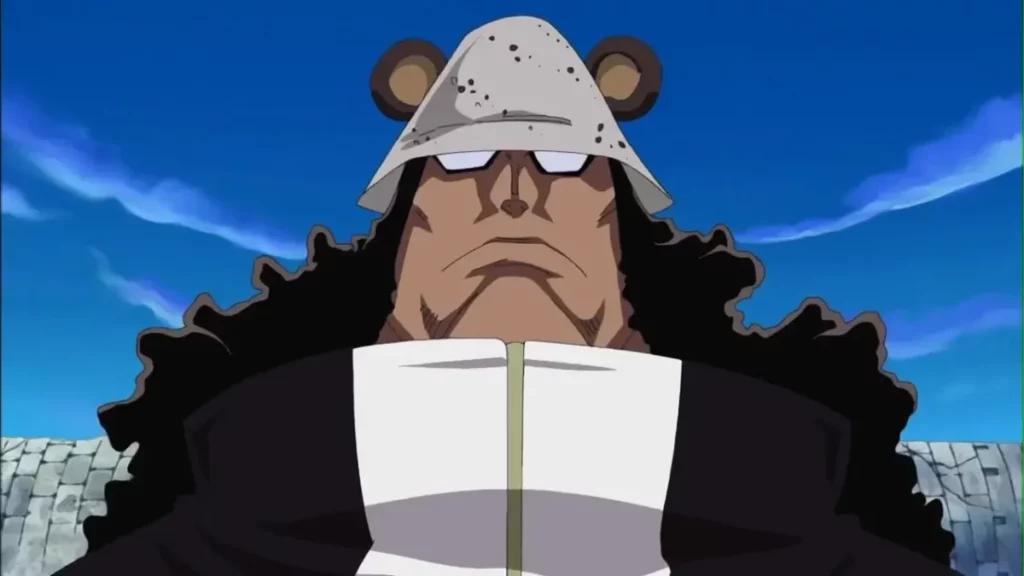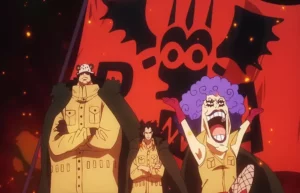One Piece Episode 1131 Kuma backstory isn’t just another flashback it’s an emotional deep dive into the life of Bartholomew Kuma. The guy we knew as the quiet, towering Tyrant now gets the spotlight he deserves. Kuma’s journey takes center stage now, unfolding like a historical drama minus the boring lectures as he rises from a poor boy in the southern Sorbet Kingdom to a leading figure in the Revolutionary Army.
To kick things off, we’re steering clear of boring textbook dates. Rather than diving into the usual timeline, we’re jumping ahead specifically to eight years after the God Valley Incident. With that in mind, let’s rewind the clock and revisit the moment when Kuma was just 17.
The Healer of Sorbet: Kuma’s Selfless Beginnings

At 17, Kuma lived in the southern region of the Sorbet Kingdom, a place soaked in inequality and social injustice. Despite his young age, he was already known for his empathy and the mysterious powers granted by the Nikyu Nikyu no Mi, the Paw-Paw Fruit. His ability? He could push away pain from people’s bodies.
Every Sunday, Kuma volunteered to heal the elderly in his region, removing their minor illnesses. They loved him for it and wished he could open a clinic every day. However, Ginny, a sharp-tongued 21-year-old close friend of Kuma’s, reminded everyone that treatment days were Sundays only, with the exception.
Ginny wasn’t just a voice of reason. She was his anchor.
Oppression Under King Bekory: When the Kingdom Turned Rotten
The political climate in Sorbet took a dark turn. A new ruler, King Bekory, rose to power a bootlicker to the Celestial Dragons (Tenryubito) who cared more about pleasing the World Government than protecting his people. Starving prisoners, poor citizens dying from neglect, Sorbet was rotting from the inside.
When an old man told Kuma, “If I fall sick, I’ll be killed,” Kuma gently replied, “If it’s something minor, I’ll take your pain away. Come see me every Sunday.”
In return, the elderly brought Kuma food and little gifts of gratitude. Kuma always shared it with Ginny. These simple acts of kindness painted a deeply human side of Kuma, who never once expected anything in return.
The Ursus Shock of Pain: Taking It All In
Inside an abandoned church, Kuma performed something almost unimaginable: the Ursus Shock of Pain, absorbing the physical pain of multiple people into his own body. The toll was brutal. He collapsed, bleeding and unconscious.
Ginny, waiting outside, rushed in when she saw him fall. She was devastated.
“They don’t even know you’re suffering,” she cried.
Kuma, ever so calm, replied, “Pain doesn’t disappear. It just waits for someone to take it in. Still, I’m happy… if they’re happy.”
Even while drowning in agony, Kuma never strayed from his path. That night, he shared the elders’ food with Ginny and suggested they take a walk the next day, provided the weather was nice.
Pain and peace, side by side.
Love Unspoken: Ginny’s Proposal and Kuma’s Silence
Time passed. Kuma, now 22, had grown stronger. More composed. One day, Ginny saw a rainbow and ran to hit it with excitement. “Let’s get married, Kumacchi!” she said with a wide smile.
But Kuma’s answer? A gentle yet devastating “No.”
Ginny didn’t buy it. “You love me. I know it. You once said, ‘I’ll make you happy,’ remember?”
Nevertheless, Kuma’s heart was a battlefield scarred by the weight of others’ pain, past traumas, and an overwhelming fear: What if loving her meant she’d suffer too?
Rather than confronting his feelings, Kuma buried his eyes in a newspaper. The front page showed Monkey D. Dragon, he infamous revolutionary leader. Kuma admired him, seeing in Dragon the hope to change the world.
Maybe, just maybe… he could be a hero too. Like the legendary sun god Nika. Like Dragon.
The Sorbet Kingdom Revolt: Kuma’s Breaking Point
At age 25, things took a horrifying turn. A new law decreed that anyone from Sorbet’s southern region could be enslaved. Soldiers began kidnapping people.
Kuma couldn’t stay silent.
He fought back.
As a result, he took down the kingdom’s soldiers with ease but the royal guards quickly captured him afterward. Ginny stood by his side, and they threw her into prison as well.
Inside the prison, Ginny revealed the painful truth: King Bekory wasn’t in charge; he was just another puppet of the World Government. Anyone who stood against the system was labeled a traitor.
Hope seemed lost… until the storm hit.
Enter Dragon and Ivankov, When the Revolution Finally Knocked

Suddenly, the walls trembled. Monkey D. Dragon and Emporio Ivankov launched a full-scale invasion. In a whirlwind of smoke and fire, they shattered the prison gates and rescued Kuma and Ginny.
Kuma couldn’t believe it. His idol stood before him, not as a distant figure in the news, but in the flesh, extending a hand of liberation.
No second thoughts.
He said yes to revolution, the same way you’d say yes to free fried snacks.
Ginny joined him too, and together, they became two of the earliest and most pivotal members of the Revolutionary Army.
However, just as the episode gave us a breather, the screen darkened.
News hit Dragon like thunder: Ginny has been kidnapped.
A new storm is coming.
Final Thoughts: Kuma’s Past is a Mirror to One Piece’s Heart
Episode 1131 of One Piece isn’t just another link in the chain; it’s an emotional core, a key turning point in the entire saga.
We see the heart behind the man once labeled a “weapon.”We watch a boy’s empathy grow into rebellion. We feel the sting of unspoken love between Kuma and Ginny. Most importantly, we witness the birth of a revolution that would one day shake the world.
This episode is the calm before a much bigger storm, one that connects the pain of the past with the fire of the future.
Kuma’s journey isn’t over. But now, at least, we understand how it began.
Related:
One Piece Episode 1130: The God Valley Incident & Kuma’s Hidden Scars
Explore the mysterious origins of Kuma’s powers and the terrifying tragedy that changed him forever.
